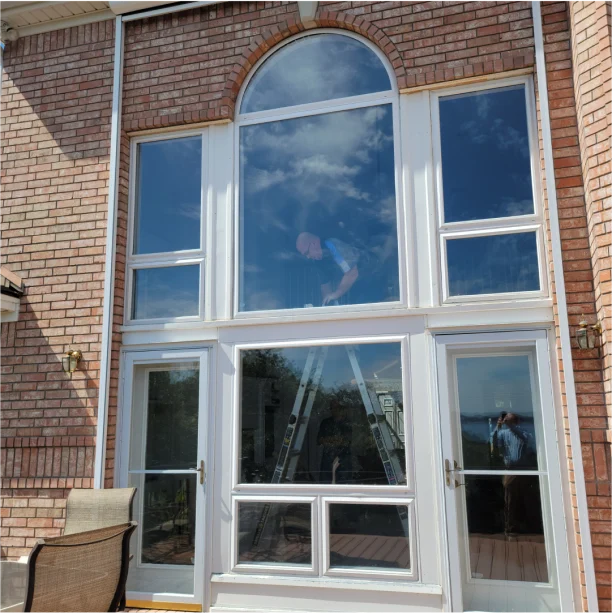When considering replacement windows for your home, you'll likely encounter argon gas-filled windows as a popular energy-efficient option. These specialized windows feature an invisible gas between the panes that can significantly improve your home's thermal performance. Understanding the advantages and potential drawbacks of argon gas fills will help you make an informed decision about this window technology investment.
What Is Argon Gas and How Does It Work in Windows?
Argon is a colorless, odorless noble gas that occurs naturally in the atmosphere. In double and triple-pane windows, argon gas replaces the regular air between glass panes to create superior insulation. This dense gas moves more slowly than air, reducing heat transfer and improving the window's overall energy efficiency.
The gas fill works by creating a thermal barrier that minimizes convection currents between the glass panes. This process helps maintain consistent indoor temperatures while reducing the workload on your heating and cooling systems.
Key Benefits of Argon Gas-Filled Windows
Enhanced Energy Efficiency
Argon gas-filled windows provide superior insulation compared to standard air-filled units. The dense gas reduces heat transfer by up to 30%, helping maintain comfortable indoor temperatures year-round. This improved thermal performance translates to lower energy bills and reduced strain on your HVAC system.
Improved Comfort Levels
These windows minimize cold drafts near glass surfaces during winter months and reduce heat gain during summer. The consistent temperature regulation creates a more comfortable living environment throughout your home.
Condensation Reduction
The enhanced insulation properties of argon-filled windows help prevent condensation buildup on interior glass surfaces. This reduction in moisture helps protect window frames and surrounding areas from potential water damage.
Sound Dampening Properties
Argon gas provides better sound insulation than regular air, helping reduce outside noise transmission. This feature is particularly beneficial for homes located near busy streets or in urban environments.
Potential Drawbacks to Consider
Higher Initial Investment
Argon gas-filled windows typically cost more than standard air-filled units. The additional manufacturing processes and specialized materials contribute to the increased upfront expense, though this investment often pays for itself through energy savings over time.
Gas Leakage Concerns
Over time, argon gas can slowly leak from the sealed units, particularly if the window seals become compromised. While quality windows are designed to retain gas for decades, eventual leakage may reduce the window's insulating properties.
Professional Installation Requirements
Proper installation is crucial for maintaining the integrity of argon-filled windows. Improper handling or installation can damage the seals and compromise the gas fill, emphasizing the importance of working with experienced professionals.
Limited Repair Options
If the seal fails and gas escapes, the entire insulated glass unit typically requires replacement rather than repair. This limitation can result in higher maintenance costs compared to standard windows.
Factors That Affect Argon Window Performance
Quality of Window Construction
The longevity and effectiveness of argon gas fills depend heavily on the quality of the window construction and sealing systems. Premium materials and advanced manufacturing processes help ensure long-term gas retention.
Climate Considerations
Argon-filled windows perform exceptionally well in climates with significant temperature variations. Homes in regions with extreme seasonal changes benefit most from the enhanced insulation properties.
Professional Installation Impact
Proper installation techniques are essential for maximizing the benefits of argon gas-filled windows. Professional installers understand the specific requirements for handling these specialized units and ensuring optimal seal integrity.
Making the Right Choice for Your Home
When evaluating argon gas-filled windows, consider your home's specific needs, local climate conditions, and long-term energy goals. The enhanced performance and comfort benefits often justify the additional investment, particularly for homeowners prioritizing energy efficiency and indoor comfort.
Quality window materials, such as innovative composites like Fibrex®, can complement argon gas fills by providing superior durability and thermal performance. These advanced materials help maintain seal integrity and maximize the long-term benefits of gas-filled units.
Frequently Asked Questions
How long does argon gas last in windows? Quality argon-filled windows can retain their gas for 15-20 years or more when properly manufactured and installed. The longevity depends on seal quality, installation techniques, and environmental factors.
Can argon gas be refilled if it leaks out? Argon gas cannot be refilled once it escapes from the sealed unit. If significant gas loss occurs, the entire insulated glass unit requires replacement to restore optimal performance.
Are argon-filled windows worth the extra cost? For most homeowners, the energy savings, improved comfort, and enhanced performance justify the additional investment. The long-term benefits typically outweigh the higher upfront costs.
How can I tell if my argon-filled windows are still working properly? Signs of gas loss include increased condensation between panes, reduced energy efficiency, and visible fogging or cloudiness in the glass unit. Professional inspection can confirm gas retention levels.
Key Takeaways
Argon gas-filled windows offer significant advantages for homeowners seeking improved energy efficiency and comfort. While the initial investment is higher than standard windows, the long-term benefits include reduced energy costs, enhanced comfort, and better sound insulation. Success with these windows depends on choosing quality products and ensuring professional installation to maintain seal integrity and maximize performance over time.
Schedule a Consultation
